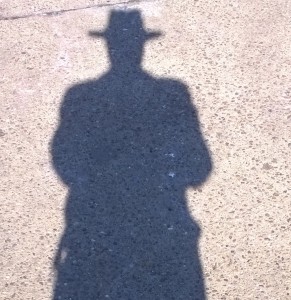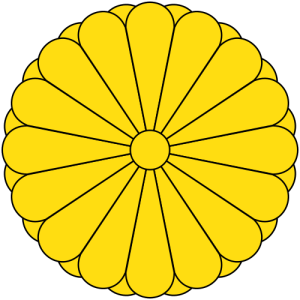What is the saying? “Let the truth set you free.” Well, December 7, 1941 should not have played out the way it did, and let me tell you why!
On December 8, President Roosevelt made a speech before Congress that broadcasted over the radio all across the United States, calling the Japanese attack on Pearl Harbor a surprise attack and “a dastardly deed,” and the American Public bought it hook, line and sinker. They went from being against the war, as a whole, to being all in, and in a big way.
But here are the real facts.
We all know that the Japanese wanted a war against the United States and attacked Pearl Harbor on the morning of December 7th. Last year, I wrote a remembrance of this date and the 2,403 sailors and soldiers who died that day as a result of 353 Japanese war planes bombing an “expecting” Pearl Harbor, starting at 7:48 AM Hawaiian time. But now I want to tell you that it didn’t have to happen. Our government set this up to happen for a reason. Let me provide the facts behind that fateful day, and I will let you decide for yourselves.
The United States and Japan had been at odds for more than a year. Behind the scenes, President Roosevelt had been looking for a way to get into World War II, but two things stood in the way. First was the election of 1940, when President Roosevelt campaigned much like one of his heroes, President Wilson, who kept us out of war. Roosevelt had to play to the anti-war crowd to keep his base happy. The anti-war crowd had many Hollywood celebrities and national heroes, including aviator Charles Lindbergh. Once the election was over, Roosevelt went back to work behind the scenes to overcome his second dilemma, the fact that most of the US had no interest in European war, and the American public—for the most part—couldn’t care less about what Japan was doing in Southeast Asia. Roosevelt had to get the public on his side to enter this war.
As early as January 1941, a Peruvian Minister told an American embassy official in Japan that the Japanese were planning an attack on Pearl Harbor. The US embassy in Japan telegrammed this information to the US State Department. Secretary of State Cordell Hull passed the message on to Army Intelligence and the Office of Naval Intelligence. On January 27, the Office of Naval Intelligence advised Kimmel that it “placed no credence” in the rumors that Japan was planning to attack Pearl Harbor. The view of US military intelligence, and of Admiral Kimmel, was that the major threat to the fleet at Pearl Harbor was from local saboteurs—not—from a Japanese military force.
Japan’s next move occurred on March 1941, when they sent a new Consul General, trained spy Takeo Yoshikawa, to Hawaii. Yoshikawa was responsible for gathering information about the movements of American ships. The Office of Naval Intelligence had broken Japanese codes, so the US knew the Japanese had spies in the United States and were aware of many of their plans.
The Roosevelt Administration made their next calculated move: Roosevelt knew the Japanese were willing to do anything to secure crude oil, and when their Axis partner Germany invaded the Soviet Union, the Japanese believed the Soviets would not attack them. As a result, Japan became more brazen in their activity, and in June of 1941,the United States and its Allies placed an embargo on crude oil going to Japan. Since Japan has no crude oil production, they had to rely solely on outsiders to provide it, so this move was really, shall we say, “poking the tiger”. Japan had to find a way to get crude oil to keep their war machine running. They were determined to acquire it, one way or another.
Despite continued peace negotiations between the United States and Japan, the rhetoric was also amped up between the two, predominately over Japan’s aggression against China and others. On Thanksgiving morning, November 27, Roosevelt met with Hull to be fully briefed regarding the Japanese situation and a review of the negotiations with the Japanese. He decided that a war warning should be issued to Panama, San Diego, Honolulu, and Manila. Later that day, Secretary of War Stimson advised of a large Japanese Naval Force sailing from Shanghai. Stimson suggested to Roosevelt that the War Department cable should be sent to Panama, San Diego, Honolulu, and Manila to prepare for war, and Roosevelt agreed. The message to General MacArthur, Supreme Commander of the Pacific Forces, spoke of negotiations with the Japanese appearing to be “terminated to all practical purposes”. It stated:
HOSTILE ACTION POSSIBLE AT ANY MOMENT . . . IF HOSTILITIES CANNOT, REPEAT CANNOT, BE AVOIDED, THE UNITED STATES DESIRES THAT JAPAN COMMIT THE FIRST OVERT ACT. THIS POLICY SHOULD NOT, REPEAT NOT, BE CONSTRUED AS RESTRICTING YOU TO A COURSE OF ACTION THAT MIGHT JEOPARDIZE YOUR DEFENSE.
MacArthur asked for clarification and reported that defense forces were ready. The next day, General “Hap” Arnold, the military commander in Washington, sent orders to MacArthur and to Pearl Harbor to take all necessary steps “to protect your personnel against subversive propaganda, protect all activities against espionage, and protect against sabotage of your equipment, property and establishments.” To this end, aircraft were to be moved together, wing tip to wing tip. Stimson warned of a possible amphibious assault on Manila, or the Thai or Kra Peninsula in Malaya, or maybe even Borneo.
As the Japanese fleet moved into attack position for the Hawaiian Islands, they had to break radio silence briefly, and this enabled US radio direction finders to locate the attack force. Also, both the British Intelligence Code Breakers and the Dutch knew that the Japanese were going to attack Pearl Harbor.
Upon receipt of the war warning in Honolulu, Admiral Kimmel and Lieutenant General Short, planned for the “surprise attack” by moving the United States Navy aircraft carriers out of Pearl Harbor and sent them to the high seas where the Japanese couldn’t find them. Pacific Commander Rear Admiral William F. Halsey then decided to place the most valuable of the remaining ships on the inside of the docks, while the least valuable were put on the outside, in case of a “surprise attack” on the harbor by the Japanese.
On December 6, President Roosevelt composed a last-minute plea for peace to the Emperor. On the same day, a Liaison Conference in Tokyo approved the decision to have Nomura deliver Japan’s final note at 1300 hours the next day, thirty minutes before the scheduled launching of the attack on Pearl Harbor. Thirteen of the fourteen parts of the message were in American hands that night. Unidentified aircraft, presumably Japanese, were observed over Luzon, where by this time, a full air alert was in effect. The troops had already moved into defensive positions along the beaches.
In Tokyo on the evening of December 6, the Navy General Staff sat anxiously awaiting correspondence. They were stunned when the Japanese spy in Honolulu sent the final report stating that Pearl Harbor was full of battleships, but not a single aircraft carrier! This put the Naval Staff into a last minute panic; they believed that there were six carriers in the Pacific. Where were the aircraft carriers? Were they waiting to ambush Admiral Nagumo? When Admiral Yamamoto was advised, he contemplated having Nagumo send out search planes, but was afraid of tipping the location of the attack force. When Admiral Yamamoto decided to notify Admiral Nagumo, he advised him that there were no carriers in Pearl Harbor, and Yamamoto left the final decision to Nagumo. As mad as Nagumo was, he felt he had no choice but to proceed and at least try to sink the battleships.
In Washington, DC, on the morning of December 7, Japanese Ambassador Nomura called Secretary Hull to request a meeting promptly at 1:00 PM local time in Washington, DC. Although the Naval Intelligence code breakers thought otherwise, both Roosevelt and Hull believed that the message from Hirohito/Japan contained the worst—a declaration of war. At that point, Roosevelt elected not to pick up the phone, though he could call any major installation in the Pacific. He and the other advisors ignored their hard intelligence and believed, based on what they knew, that Japan was going to attack Malaysia. Roosevelt knew that all of the US Pacific Stations were at “third alert”, meaning they were expecting sabotage only.
So the Japanese didn’t get the honor of announcing their war plans before the “surprise attack” all as desired by Roosevelt. Now he could call it a dastardly surprise attack and rally the American Public, who never knew the whole story! The government withheld information from the public so it could manipulate them. Wow, what a surprise!
As a final test to your knowledge of the surprise attack on Pearl Harbor, do you know who fired the first shot?
Okay, time’s up… the United States did. The USS Ward sunk a mini-spy sub that had moved into place to assist the war planes with their surprise attack at 6:45 AM.As you can now see, that was one full hour before the first Japanese planes flew over Pearl Harbor.



